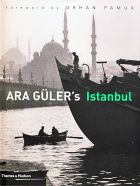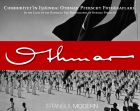Buy or gift a stand-alone digital subscription and get unlimited access to dozens of back issues for just £18.99 / $18.99 a year.
Please register at www.exacteditions.com/digital/cornucopia with your subscriber account number or contact subscriptions@cornucopia.net
Buy a digital subscription Go to the Digital EditionMaggie Quigley-Pınar describes a book of photographs that evoke the spirit an almost-forgotten modern era: Istanbul in the 1970s
MUTED WORLD By Maggie Quigley-Pınar
This handsome volume consists of 120 black-and-white photographs of Istanbul taken between 1972 and 1991 by the French photographer Paul Veysseyre. For those who have lived in Istanbul, or who passed through during that era, or for first-time visitors seeking an unusual memoir of Istanbul, Veysseyre’s photographs invest the city with an unexpected dignity, presence and detachment. For lovers of photography and urban history, they are a mysterious treasure trove of views and characters.
These are images of a city teetering, accidentally or intentionally, on the brink of social and political change. Colour comes by way of the artist’s accounts of the grand old city under pressure from the daily transactions of a burgeoning population, and from a complementary “insider’s view” by his colleague, the writer Jeanine Riegel, a longtime resident of Istanbul. Born in Lyon in 1947, Veysseyre had a boyhood fascination with photography that became a passion. He learnt his craft while studying maths, economics and history of art at Lyon University. It was the black-and-white photography of the American Magnum photographer Constantine Manos (in particular his Suite Grecque), which Veysseyre first saw in 1972, that would inspire a “similar style of work on Istanbul”.
His early fascination with Turkey saw him returning again and again over three decades to a city in constant flux and always full of surprises – first as traveller, later as a resident of the city while he worked as a teacher and an archaeological photographer at the Institut Français d’Etudes Anatoliennes in the late 1970s and 1980s. It is Veysseyre’s vision of the incongruities and harmonies of the changing city that can be seen in this book.
Veysseyre has held the post of specialist photographer at the Gallo-Roman Museum in Saint-Romain-en-Gal since 1987, and has taught photography at Lyon 3 University. He has been responsible for several publications and exhibitions devoted to archaeology and art conservation, among them L’Usure du temps (1998) and Sauvé des eaux (2007). His photographs of Turkey, the Balkans, the Caucasus and Central Asia have also been the subject of numerous exhibitions.
I first met Paul at Istanbul University in the 1970s. We regularly escaped together from the lecture rooms into the “real world” of the second-hand book stalls of Beyazıt’s Sahaflar market and the unfailingly surprising streets of Kalenderhane and Vefa. I well remember the delight of watching him in a Balat alley – behind his Leica lens, with an icy November drizzle running off the end of his nose – as he focused (seeing but unseen) on a cat emerging from behind bars, while I and his other companions speculated from the dry haven of a nearby portico what lasting image might evolve from this unlikely encounter: the cat clearly a symbol of resilience and adaptability in the urban jungle.
In this volume, he sets his personal observations of everyday folk against the enquiring documentarist’s search for time-defying images. We see flame-brittle timber houses and ephemeral street objects, views inevitably destined for oblivion, and ancient stone alleys and billboards that even now remain defiantly indestructible. He guides the viewer through lost and forgotten districts, taking us on a journey as much through time as through a neglected city, which perhaps will soon have entirely disappeared.
He shows us iron barges long gone from the city’s waters but here still bearing coal for the ferryboats. Waterside mosques stand wrapped in sea mists, houses are reoccupied by urban latecomers, Ottoman hans house impromptu foundries. Such are the textures and tones of the urban landscape suspended in this fascinating visual documentary.
Decades of work, travel and exploration inform Veysseyre’s photography. The key is his skill in so positioning himself as to render the unseen visible – against all odds. Picture him, camera in hand, during the Iran–Iraq war, on the hills outside Tabriz and you will see a photographer seeking the high ground even at moments of extreme duress. Like James Joyce ensconced on the balcony of Bewley’s coffee shop in Dublin, fleshing out characters from the passing throngs below, you know that Veysseyre is always, whatever the risk, prepared to share his vantage point.
Veysseyre’s chosen metaphor for this encounter is that Islamic terrace suspended, sometimes precariously, over the street, from which the viewer sees what would doubtless go unnoticed at ground level. So attached is Veysseyre to this image that he gave its name, cihannüma, transliterated the French way, to the publishing house founded specially for his series of photographic publications on Turkey, Éditions Djahânnâma.
Some of these images have been previously exhibited; many more are being seen for the first time. Ironically, for one so enamoured of such a metaphor, heights and climbing were never Veysseyre’s strong suit – which makes his determination to climb the minaret of the Süleymaniye in 1982 in pursuit of an unusual viewpoint seem all the braver, if not decidedly reckless. “To get permission for this daunting task was an unending trek from this government office to that,” he recalls. “I’d be told: ‘It’s not under the jurisdiction of this department. Try the ministry of culture… try the municipality… try the müftülük…’”
Finally acquiring some form of authorisation, the photographer sets off on his daunting climb up the rickety stone steps, emerging from pitch-blackness into sunlight on the first şerefe (balcony), only to find the railings dangerously loose. After several moments, too terrified to move, he looks around: “The view was so extraordinary that I soon forgot my vertigo and became totally absorbed in taking pictures.”
Unaware of the passing of time, he is so startled by the sudden sound of the muezzin’s voice from round the other side of the balcony that he almost drops the camera. Of course at prayer time back in 1986 the priest would still have had to climb the minaret.
At an early exhibition of his Istanbul images in a Lyon suburb in 1984, Veysseyre noticed one particular visitor staring intently at each photo. It was the Turkish consul in Lyon, Özcan Davaz, freshly arrived in his new post from Tehran. A native of Bostancı, Mr Davaz thanked the artist for his fresh renderings of the city he knew and loved. “Such pictures are rarely to be seen,” he said. Davaz has remained one of the photographer’s most ardent admirers.
Maggie Quigley-Pinar is an art historian living in Istanbul.
The second volume of Paul Veysseyre’s three-part series of photographs of Turkey, ‘Anatoliques’, is due to be published in 2013
Simple on the outside, some wooden village mosques had an added portico reminiscent of galleries opening onto the courtyards of private houses in the region. Inside, pillared halls and colourful painting on the wooden structure and on the walls make for a warm, joyful space. Photographs by Tarkan Kutlu
Abdülhamid I and Osman III’s private quarters in the Topkapı. Photographed by Fritz von der Schulenburg
Sagalassos, the remote site in southern Turkey where a giant statue of Emperor Hadrian was discovered five years ago, is the driving passion of Marc Waelkens. The Belgian archaeologist, whose new book is now available from Cornucopia, talks to Thomas Roueché about his pioneering work as director of excavations
The best table grapes in Istanbul are the fragrant, delicate skinned çavuş from the northern Aegean island of Bozcaada, ancient Tenedos, and the sweet sultaniye grapes from around Izmir.
John Carswell pays tribute to his friend Honor Frost, doyenne of underwater archaeology
James Crow on Istanbul’s amazing system of aqueducts
The landmark 2012 exhibition at the Tokpapı Palace, and the sumptuous book that accompanied it.
They were stigmatised and despised, and eventually they were closed down. But what would Turkey be today without the Village Institutes, its bravest educational revolution, and the young people they empowered? Maureen Freely tells the moving story of the institutes, the subject of a new book and exhibition
The lethal mischief of Canon MacColl, by David Barchard
The Istanbul diaries of Gertrude Bell, now available online, reveal her astonishing transformation from socialite to scholar and political observer. By Robert Ousterhout
As Turkey and the Netherlands celebrate 400 years of diplomatic relations, Henk Boom highlights the twenty turbulent years that Frederik Gijsbert, Baron van Dedem spent as ambassador to Constantinople




Cornucopia works in partnership with the digital publishing platform Exact Editions to offer individual and institutional subscribers unlimited access to a searchable archive of fascinating back issues and every newly published issue. The digital edition of Cornucopia is available cross-platform on web, iOS and Android and offers a comprehensive search function, allowing the title’s cultural content to be delved into at the touch of a button.
Digital Subscription: £18.99 / $18.99 (1 year)
Subscribe now